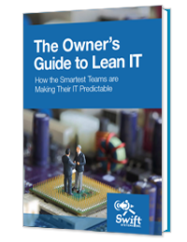
What Exactly Does Computer Networking in Maryland Look Like?
There’s a good chance you know you have a computer network for your company, but you don’t know what exactly it really is or what it does. Sure, it connects computers, right? Maybe it connects your laptop to a server or something? There’s a lot to learn, and this article will give you a better understanding of computer networking in Maryland.
By knowing what computer networking is exactly, you’ll have a greater understanding of what you have, what you need, and what IT professionals are telling you that, right now, sounds like some foreign language you’ve never studied. You’ll also know whether or not your current IT team is doing a good enough job. To truly get a good handle on computer networking, you’ll need know some basics, such as:
- What is computer networking?
- What are some of the computer networking topologies?
- How important is EDR security when it comes to computer networking?
- Why is computer networking important to me?
- Why in the world should I care about computer networking?
What is Computer Networking?
Simply put, it’s all about connections. Networks connecting to computers, cables connecting to routers, servers, and modems, it’s all about connections. A more complex way of describing it is that it provides a way for nodes to share resources. Anything that involves computers creating, moving, or ending data is called a network node. Nodes come from your phone, your computer, servers, even your printers. All of this data is moved either through a wired or wireless connection.
In today’s digital world, pretty much any piece of technology you have is going to networked through some computer. Think about it – your phone connects to a network every time you make a call or search the web, printers, fax machines, tablets … the list really does go on and on.
It might surprise you to know that some of the earliest computer networks go back to the late 1950s with a military radar system named Semi-Automatic Ground Environment (SAGE). Since then, engineers and scientists have worked on ways to move data from one point to the next faster.
What are Some of the Computer Networking Topologies?
When it comes to the physical layout of networks, it’s usually less about where things are and more about how things connect. Because of this, it’s usually referred to as topologies instead of geographies. More than likely, this isn’t going to be an important fact for you to remember, but it is good know in case your IT person starts talking about your company’s network topology.
This is where the more technical information comes into play. First, you have to break it down between wired connections and wireless connections.
Wired technologies
For the sake brevity, let’s focus on the wired technologies that you’re going to hear more about with computer networking.

- Coaxial cable – Chances are, if you’ve ever twisted the little knob on the cord that connects your cable to your television, you know what a coaxial (or coax) cable is. Coax cable is used for just that, along with places that use local area networks (LAN). Inside of the coax cable, you’ll find copper and aluminum wire that’s surrounded by an insulated layer, which is then covered by a conductive layer. The insulation is there to help prevent outside interference and distortion. Of all the wired options, using coax is usually the slowest. Speeds usually hover around 200 to 500 million bits per second. Although that might sound fast, there are much faster options.

- Twisted pair wire – Twisted pair wiring is the most used wire in the telecommunications field. It consists of copper wires that are, unsurprisingly, twisted into pairs. If you were to look at telephone wiring, you’d see two insulated copper wires twisted into pairs. For computer cabling – or in this case, an Ethernet cable – consists of four pairs of copper cables that can be used for both voice and data. In general, twisting the two wires together helps reduce interference. Speeds for twisted pair wiring range from two million bits per second to 10 billion bits per second and come in two forms: unshielded (UTP) and shielded (STP). Each of those can be used in different category ratings.

- Fiber optics – Fiber optics throws copper out the door and uses fiber made of glass. The information passed along the lines are pulses of light that represent data (crazy, right?). With fiber optics, you don’t have to worry about the transmission loss and electrical interference you would normally get from metal wires. Fiber optics can also carry multiple wavelengths of light, which increases the speed of data transfer a great deal. Because of this, you’re looking at transmission speeds that are in the trillions of bits per second. This is one of the reasons fiber optics are used for undersea cables to connect information between continents.
Then there’s wireless technology. One thing to understand before reading over the next part is that, because of the price differences between wired and wireless (not surprisingly, wireless connections will cost your company more) some companies will stick with the wired option purely based on price point. Regardless, there’s a good reason why wireless is a bit more pricey.
Wireless technologies
There are several different wireless technologies when it comes to computer networking. Communications satellites, which beam down your favorite television shows to your dish and provide you with satellite-related Internet connections, fall into this category. Cellular and PCS systems deal with your cell phones. The wireless feature here that you’re going to want to know about when it comes to computer networking is radio and spread spectrum technologies.

- Radio and spread spectrum technologies – Earlier, we talked about LAN connections, but with radio and spread spectrum technologies, you can actually have wireless LAN networks. These networks use a high-frequency radio technology similar to digital cellular, just like what is used for cell phones, and low-frequency radio technology, like the waves your car picks up when you listen to the radio. Wireless LANs use spread spectrum technology to enable communication between multiple devices in a limited area. For all intents and purposes, this is what you would call wi-fi.
Network nodes
Now that you know about the wires (or lack thereof), you should know what they plug into, if you will.

- Network interfaces – Most all computers will have what’s called a network interface controller (or NIC). These NIC cards provide your computer with the ability to send and receive data. If you look at the back of your computer (or side, if you have a laptop) you should see a spot for an Ethernet plugin. This is the NIC card. The card responds to traffic addressed to a network address for the NIC card or the computer as a whole. There’s a chance you might have heard someone talk about a MAC address. This is where that comes in. With Ethernet networks – which is probably one you are using right now – each NIC card has a unique Media Access Control (MAC) address, which is usually stored in the controller’s permanent memory. To avoid address conflicts, the Institute of Electrical and Electronics Engineers (the IEEE) keeps up with the uniqueness of the MAC addresses.

- Repeaters and hubs – A repeater receives a network signal, cleans it up, and then regenerates it. The signal is usually retransmitted at a much higher power level so the signal can cover longer distances without degradation. When it comes to twisted pair Ethernet configurations, repeaters are required for cable that runs longer than 100 meters. With fiber optics, it’s much different. Repeaters can be tens or even hundreds of miles apart. Repeaters with multiple ports is known as a hub.

- Routers – If you’ve ever had Internet access, you more than likely know what a router Routers usually connect to modems so that you can have wi-fi access.
- Modems – Here’s a trivia answer for you – modem is actually short for MOdulator-DEM Think of modems as the receiver for all of the data your company receives so that you can have access to the Internet. The router then spreads the love wirelessly throughout your building.
- Firewalls – Of course, if you have any kind of Internet connection, you have to have a firewall. The firewall is a network device used to control network security and If you’ve ever tried to log on to a website from your company computer and it says it’s been blocked by your IT department, that means a firewall has been set up. It works both ways, though. The firewall also keeps out unwanted data, which helps prevent against your company getting hit with a cyber attack.
How Important is Security When It Comes to Computer Networking?
In a word, very. You never want to leave your company open to any sort of cyber attack. Without security in place, hackers can figuratively waltz into your servers, steal information, plant viruses, or even install ransomware, which will encrypt all of your files until you pay the hackers a certain amount of money to get the password to unlock your files – if they even give you the password at all.
There is a slew of programs out that to protect your company, but to be certain your company is protected, you’re going to have to have IT professionals managing your protection. Why? When it comes to protection, you’re dealing with firewall permissions, antivirus programs, malware protections, etc. Your company is too valuable to risk any sort of attack due to shoddy software.
This is why IT professionals take classes and keep up-to-date about network security. Don’t take that for granted.
Why is Computer Networking in Maryland Important to Me?
After reading all of this, the one thing you should take away is that there are a lot of parts connected together so that you can post a photo of your company’s retreat on Facebook. Without computer networks, your company wouldn’t be able to send out emails, check on your website, send a fax, connect your laptop/phone/tablet to wi-fi, etc.
Your company also wouldn’t need servers, because there’s nothing to connect the servers to your computers. In short, your company wouldn’t be able to function efficiently. What’s more, there’s a very big risk that you company would cease to exist quickly.
Why in the World Should I Care About Computer Networking?
“Well, Mr. Smith, we looked over your computer networking situation and it’s going to cost around $75,000 to get everything you need. You’re going to need some modems, routers, fiber optics, coax cables, network interfaces, and a few extra NIC cards for good measure. How does that sound?”
After reading this article, the above situation should sound almost ridiculously stupid. However, had you not just read this article, would you have known that? Yeah, swallowing that price tag might have been rough, but would you have known that this company was taking you for a ride? The old adage is still true – knowledge is power. Now that you know what these things are, you can tell this person to promptly leave your office and never return, along with a few choice words.
You know when you’re being taken advantage of, so that should mean you know when professionals are there to take care of you the right way.
Now That You Know, You Know
Computer networking in Maryland isn’t something you want to entrust to someone who knows very little about the subject. Remember, you’re talking about the wellbeing of your company. You wouldn’t trust it in the hands of swindlers, so why would you want someone who barely knows what they’re doing to take care of it?
At Swift Systems, our team of experts know what you need, how to set everything up, and make sure you feel completely comfortable with everything from start to finish. There’s no swindling here. The Swift Systems folks are trained to make sure you can sleep better at night knowing your company’s computer networking system is in great hands, 24/7.
If you have any questions about Swift Systems and how they can fit into your company life, reach out today for a consultation. They’re here to help you, and now you might be able to understand a thing or two they have to say about your network.

IT systems are foundational to modern businesses. Too often, that foundation is unsteady. Unpredictable outages, insecure networks, and unreliable performance from mission-critical systems can jeopardize your entire business.
There’s a better way. Learn how.
Get in touch with us for a free consultation with one of our technical experts. We’ll review your current systems, assess your needs, and identify the coverage options to best meet them.
Get in touch with us by phone:

